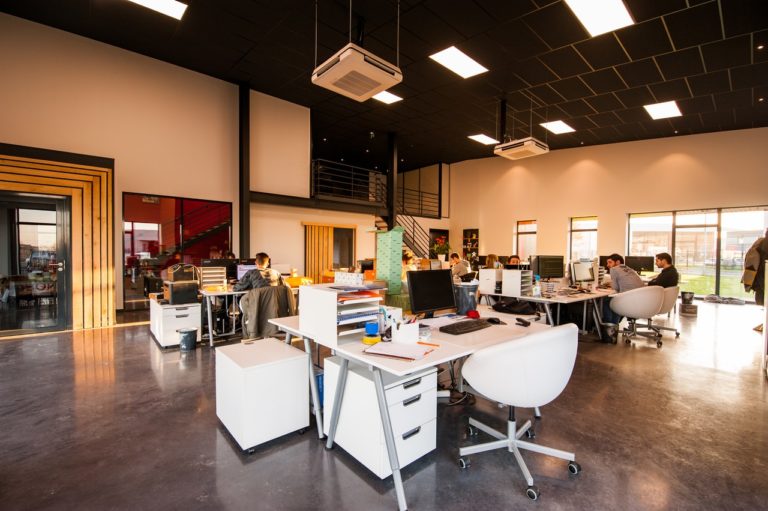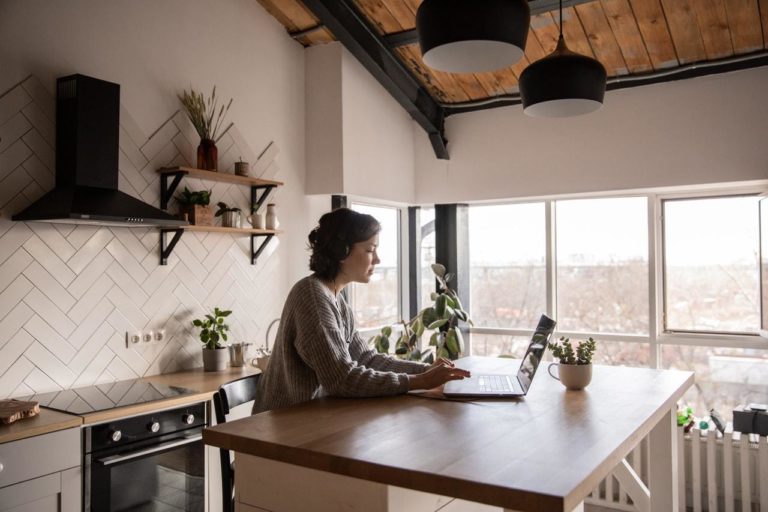Chicago’s Top Commercial Real Estate Broker, William Himmelstein, shares insights on how COVID-19 has impacted Commercial Real Estate, how to approach the current market, and how to plan for a safe return to the office.
Commercial real estate (CRE) is typically a company’s second largest expense to payroll or 3rd largest for manufacturers. Yet, never before in recent history has space been on the mind of almost every single business owner and CEO. As the CEO of Tenant Advisory Group with twenty+ years of experience as a commercial real estate broker, I have seen corporate leaders make many mistakes since March that have cost their companies significant dollars and negotiating leverage. In this article, I discuss the current and future CRE market and how to best position your company to buy low, sell high, and ensure you are getting the most out of your space while spending the least. I will also share insights into what other commercial space users are doing and planning for, the do’s and don’ts of approaching your landlord to garner free rent or a lease restructure, and how to safely return to the workspace.
State of the current office market
Following unprecedented stay-at-home orders and business shutdowns at the beginning of Q2 2020, the U.S. office market was severely impacted with the largest quarterly decline in net demand for office space since the Great Recession of 2009. Net absorption, which represents the total amount of occupied space at the start of a period subtracted from the total occupied at the end of the period, dropped from +5 M rentable square feet (RSF) in Q1 2020 to -23 M RSF in Q2. Net absorption then dropped even further in Q3, to a colossal -41M RSF. In Q3 2020, a record number of 73 office markets around the nation documented negative absorption. In particular, office sublease space continues to mount around the country, with sublease availability reaching highs greater than seen in 2002 after the dot-com bust. This is predicted to reach 150M RSF by the end of 2020.
Despite the weakened demand for office space over the year, new space has continued to come on line as ongoing construction projects finish. Following the 23M RSF of new office space completed in the first half of 2020, an additional 12M RSF of new office space construction was completed in the third quarter. While many projects that were initiated prior to the onset of the pandemic are also still underway, few developers have taken on purely speculative developments over the last several years, so it is unlikely that there will be an inundation of uncommitted space in new developments that will continue to drive up the vacancy rate.
With the drop in demand, increase in sublease space, and continued new construction coming on line, the national office vacancy rate was pushed to 11% in Q3 2020, the highest it’s been in the last five years. Vacancy is expected to increase further in 2021 and remain elevated throughout the year. However, it’s important to note that the vacancy rates dipped as low as 7%-8% for downtown office space at the height of the last two economic expansions. At the depth of the previous two recessions, the vacancy rate climbed to as high as 17%-18%. Equilibrium, considered the point where neither the landlord nor the tenant has a clear advantage, is 12.5%. We are not too far from that equilibrium point right now.
Office rental rate growth has been slowing nationally, even before the start of the pandemic, and it flattened in Q3 2020. While it is predicted to start declining in mid-2021, we have not seen direct landlords dropping their rates much at all. We have seen additional concessions offered, such as more free rent and more tenant improvement allowances. Yes, there are many subleases on the market, but it needs to be understood that for example, if you are seeking 5,000 RSF with a law firm build-out and between 3-5 years of term in the central business district, no other sublease without those specific criteria will work for you. As another example, Groupon’s 150,000 RSF of space they are subleasing in Chicago only works for those who need at least 75,000 RSF and up and are willing to be located in that area of the city.
Jones Lang LaSalle recently reported that over the next 36 months, the vacancy rate will increase by 10% across all asset classes across the United States due to companies going out of business, downsizing, and implementing a more flexible work from home policy that does not require everyone to be in the office every day. They also predict a 10% increase in demand due to economic growth and change in office density. Twenty years ago, when I started in the CRE industry, the average number of square feet per person across all industries in the downtown Chicago office space was 470 RSF per person. Fast forward to right before the pandemic, that density had dropped to 190 RSF per person. It is expected that the density will increase again with new space designs taking into account health and wellness protocols. Of course, as with the rest of the economy, commercial office market shifts will heavily rely on the pandemic’s duration and severity.
How are retail & industrial sectors doing?
Retail is certainly struggling the most of any sector right now, as people are changing their spending habits, and online shopping has dramatically risen. While overall market rents flat-lined nationally in Q3 2020, large markets such as New York, Boston, Chicago, and Los Angeles all documented negative growth. Net absorption nationally became negative in Q3 2020, reaching -19M RSF, which is more than twice documented during the Great Recession. Retail vacancies are climbing, and markets all around the nation are experiencing store closures and bankruptcies at an accelerated rate. This trend will continue to put downward pressure on a sector that was already facing some headwinds. That said, there are still a handful of pandemic-resistant uses such as medical, pharmacies, and other essential-oriented retailers such as banks, grocers, home-improvement stores, and sporting goods stores that are demonstrating stable activity. The situation is not as dire as one might think, seeing the growing vacancies, but current market conditions will continue to force retailers to close, further increasing vacancies and decreasing rents.
Unlike retail, the industrial sector overall remains strong. Despite the economic upheaval, many businesses across the nation are investing heavily in their logistics. An accelerated shift to e-commerce is also most certainly contributing to active industrial markets. The third quarter of 2020 saw a record high in industrial leasing activity, at over 215M RSF, and this number is expected to continue to rise. Despite the increased leasing activity, vacancy rates grew slightly to 5.6% in Q3 2020 as a historic level of industrial development outpaces net absorption. Nonetheless, rent growth continued, and vacancy is predicted to remain close to 6% throughout 2021 due to the high leasing velocity. The increasing growth for the industrial sector should continue to be fueled by an accelerated shift to e-commerce.
Buying versus Selling
Trends with commercial acquisition and disposition are heavily dependent on location, property type, and how it’s priced. Chicago office, for example, has picked up investment activity in the six months since the pandemic. We’ve seen nearly $76B change hands with office CRE nationally over the last 12 months.
The industrial sector has seen over $65B in sales volume over the last 12 months, nearly twice the historical average. While the sector was coming off a record-setting first quarter and cooled considerably in Q2, there is currently a lot of activity with national and international buyers looking to acquire new assets, especially those with good credit tenants.
As expected, retail has been met with caution from both lenders and investors alike. The demand is certainly strongest for single-tenant, triple net leases with essential-business tenants. However, the activity remains slow. Valuations will continue to be affected as climbing vacancy rates and continued tenant distress reduce income returns, and investor caution diminishes price growth. While there will always be demand for properties with strong credit tenants, some caution is felt in this sector.
What are office business owners doing now?
Out of the close to 250 business owners I have personally spoken to since the pandemic began, only two have said they plan never to come back to the office. To put that into context, one of them was already going out of business prior to the shutdown, and the other already had one foot out the door. Instead, my clients and colleagues are thinking about returning to the office safely, when they can return to the office, and what the office will need to look like going forward.
Currently, many business owners are seeking ways to secure free rent. This includes rent deferral, as well as negotiating lease restructures. Other business owners are seeking ways to terminate their existing leases with the plan to return when the market has softened and negotiated more favorable terms. I have not personally spoken to any business owners who office downtown but are now saying they’d like to move to the suburbs due to Covid, or vice versa. The reason Chicago has had a huge migration of corporations from the suburbs to the city in the last few years is so employers could be near their talent, customers, and vendors, as well as dining and entertainment. Those reasons will not change.
Business owners have traditionally sought a centralized location where their employees can collaborate, share ideas and knowledge transfer to the younger generation, build the company’s culture, and build a sense of team and relationships that breed employee loyalty. Since the pandemic began, business owners are finding that while their employees are productive, there is no team building, collaboration is more difficult, and there is little transfer of knowledge between senior and junior team members.
Since mid-March, for every client I have that is downsizing or looking to shed space, I have the same number of clients that are growing and seeking additional space. The big difference right now is that our sublease listings are getting little to no traffic. Many of my clients are struggling to plan for the long term and, therefore, execute shorter-term leases, taking a wait-and-see approach with the pandemic. I anticipate a wave of activity now that the election is behind us and an even greater wave of activity as vaccine updates continue to be announced.
How can you take advantage of the current market conditions?
There are several ways you can go about taking advantage of the current market conditions. The first is trying to secure free rent from your landlord. It is standard procedure in the post-covid era for landlords to offer rent deferment. Be prepared to show your financials comparing last year to now. You will need to show financial hardship. You should also be prepared to show you’ve applied for and received a PPP loan. Occasionally we have seen landlords offering a few half months of rent and/or a small amount of rent abated with little to nothing in return. However, more often than not, you will need to offer something to receive the free rent, such as an added term in the form of the same number of months at the end of your lease.
Another venue we are helping many clients to pursue is to restructure their current lease. Should your business need to grow or downsize, or alternatively, be within three years of lease expiration, there is an opportunity to restructure your existing lease. I would only suggest exploring this option if your size needs have changed and/or you really need the free rent. We call the strategy a blend and extend. You blend your current rental rate down by adding term to your lease.
One final option that some businesses are choosing right now is simply terminating their lease. It certainly depends on your situation, but there can be opportunities to terminate a lease. This is dependent on many factors, including the financial situation of your company, the language of your lease, the performance of its duties by the landlord, as well as risk tolerance. It’s always important to keep detailed records of anything that could be construed as a landlord default, such as the HVAC not working properly, elevators not working properly, any deferred maintenance not being attended, a lack of responsiveness by the landlord, or any other occurrences that do not allow your business to function properly or safely. All this being said, I am not an attorney, and should you be considering terminating your lease, I highly recommend you speak to a qualified real estate attorney.
Best practices for returning to the workplace safely
Over the last several months, I’ve compiled what I believe are some of the most relevant and easy-to-implement ideas for safely returning to the workplace. These include shifts to utilize all office entrances, installing thermal temperature testing at entrances, installing hand sanitizing stations, applying antimicrobial paint or replacing surfaces with antimicrobial properties, providing coat/belongings check areas to reduce the spread of germs, elimination of waiting areas, setting up one-way traffic patterns, increasing social distancing in common spaces and reducing seating in these areas, and installing plexiglass dividers between cubes & tight workspaces. Even minor updates such as these can go a long way in improving the quality of the workplace and enabling your personnel to feel safe as they return to the office.
Bill Himmelstein, CCIM, CNE, is the Founder, CEO, and Managing Broker of Tenant Advisory Group, LLC. Bill started Tenant Advisory Group in July 2008 after gaining experience at several major commercial real estate firms in Chicago. To date, his has completed over $1B in commercial transactions, with his typical clients including professional service firms, technology-based businesses, manufacturers, and private practice physicians. Bill has been a guest professor at UIC, DePaul, and Columbia College, he’s hosted a digital real estate show through Advisor TV and was a founding member of both the Coleman Circle for Entrepreneurs and the Chicago Leadership Alliance. Bill prides himself on acting with a high level of integrity, accountability, responsiveness, and determination in achieving the best possible deal terms for all of his clients. In 2017, Bill was named one of The Most Influential Commercial Real Estate Brokers in Chicago by Crain’s. His expert advice and market knowledge has also been featured in over a dozen news articles, podcasts, and radio interviews.




